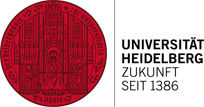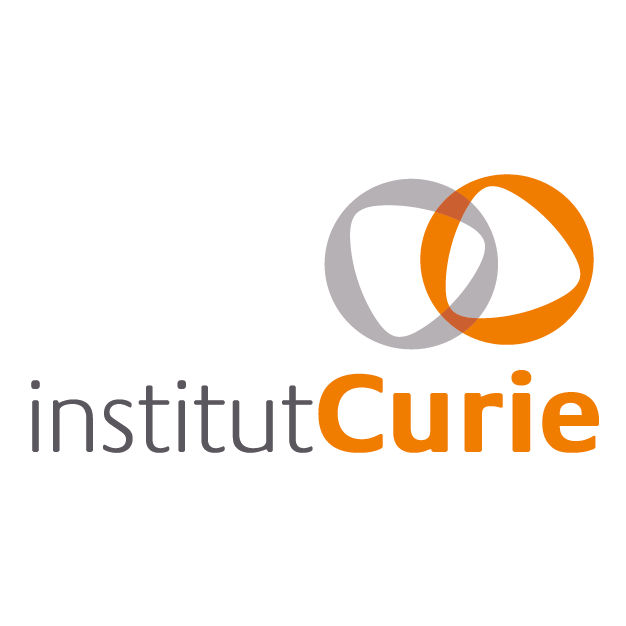预约演示
更新于:2025-11-01
[68Ga]FAPI-46
更新于:2025-11-01
概要
基本信息
非在研机构- |
最高研发阶段临床2期 |
首次获批日期- |
最高研发阶段(中国)- |
特殊审评孤儿药 (美国) |
登录后查看时间轴
结构/序列
分子式C41H57F2N11O9 |
InChIKeySDBGUEFOSXNKBX-HKBQPEDESA-N |
CAS号2374782-04-2 |
使用我们的ADC技术数据为新药研发加速。
登录
或

关联
28
项与 [68Ga]FAPI-46 相关的临床试验NCT06922825
Study Evaluating 68Ga-FAPI-46 Tumor Microenvironment Interaction in Solid Tumor Patients
This pilot study aims to compare PET/CT imaging using 68Ga-FAPI-46 to imaging results from standard MRI or CT with contrast in patients with solid tumors undergoing biologic therapy. A total of 50 participants will receive an intravenous injection of 68Ga-FAPI-46 and undergo a PET/CT scan shortly after received the study drug. Imaging will occur before starting standard antibody-based therapy. Participants will then proceed with their treatment, and the study team will monitor them through chart reviews for up to 36 months to evaluate treatment response and any correlation with tumor uptake observed on PET/CT scans.
开始日期2025-11-01 |
申办/合作机构 |
NCT06659705
Cutting Edge Imaging for Earlier Pancreatic Cancer Diagnosis: Evaluation of Positron Emission Tomography (PET) With the Fibroblast Activation Protein Inhibitor (FAPI)
Assessment of the relevance of a new medical imaging test, FAPI PET, which could detect progression or relapse earlier than other tests currently available. Ultimately, it could enable early forms of pancreatic cancer to be detected and used for screening.
In addition to the usual examinations prescribed, FAPI PET scans will be repeated at several points in the treatment process.
All study patients must first have been included in the Homing cohort (NCT 04363983, APHP promotion). Clinical characteristics, judgement criteria and results of biological or imaging examinations carried out as part of this cohort will be shared.
Patient follow-up and participation in the study ends when conventional imaging (CT and MRI) shows disease progression, relapse or death.
In addition to the usual examinations prescribed, FAPI PET scans will be repeated at several points in the treatment process.
All study patients must first have been included in the Homing cohort (NCT 04363983, APHP promotion). Clinical characteristics, judgement criteria and results of biological or imaging examinations carried out as part of this cohort will be shared.
Patient follow-up and participation in the study ends when conventional imaging (CT and MRI) shows disease progression, relapse or death.
开始日期2025-09-30 |
申办/合作机构 |
NCT06957782
The Value of 68Ga-FAPI PET/CT for Evaluating Peritoneal Treatment Response
Peritoneal metastases (PM), commonly originating from gastrointestinal and ovarian cancers, are associated with a poor prognosis and limited treatment options due to the diffuse nature of the disease and the inability of systemic chemotherapy to adequately penetrate the peritoneal surface. Intraperitoneal (IP) chemotherapy has emerged as a potential treatment modality for patients with extensive PM, allowing for higher local drug concentrations while minimizing systemic toxicity. However, current response evaluation methods, such as CT scans, have low sensitivity for detecting PM, and second-look laparoscopy, although more accurate, is invasive and unsuitable for repeated assessments. The ⁶⁸Ga-FAPI PET/CT scan offers a promising non-invasive alternative for assessing peritoneal response to IP chemotherapy. This imaging technique targets the fibroblast activation protein, which is overexpressed in cancer-associated fibroblasts within the tumor microenvironment. Early studies have shown that ⁶⁸Ga-FAPI PET/CT is a highly sensitive too in detecting peritoneal metastases. Given these advantages, the investigators hypothesize that ⁶⁸Ga-FAPI PET/CT could improve the evaluation of treatment response in patients undergoing IP chemotherapy for PM, offering a non-invasive and accurate alternative to current methods. The primary objective of this study is to investigate the accuracy of ⁶⁸Ga-FAPI PET/CT for evaluating peritoneal response in patients with peritoneal metastases undergoing repeated IP chemotherapy.
开始日期2025-09-01 |
申办/合作机构- |
100 项与 [68Ga]FAPI-46 相关的临床结果
登录后查看更多信息
100 项与 [68Ga]FAPI-46 相关的转化医学
登录后查看更多信息
100 项与 [68Ga]FAPI-46 相关的专利(医药)
登录后查看更多信息
40
项与 [68Ga]FAPI-46 相关的文献(医药)2025-10-06·MOLECULAR PHARMACEUTICS
Impact of Albumin-Binding Moieties on Structure–Affinity–Pharmacokinetic Relationships of Novel FAP-Targeting Radioligands
Article
作者: Saito, Kosuke ; Yamaguchi, Keisei ; Nakashima, Kazuma ; Ono, Masahiro ; Watanabe, Hiroyuki
Fibroblast activation protein (FAP) is an attractive biomarker for tumor-targeting radioligands. While [68Ga]Ga-FAPI-46 is a promising FAP-targeting radioligand for cancer diagnosis, clinical application of [177Lu]Lu-FAPI-46 for targeted radionuclide therapy is limited due to its insufficient tumor retention. Albumin binder (ALB) including 4-(p-iodophenyl)butyric acid is widely utilized to improve tumor accumulation of radioligands. In addition, substituted groups in 4-(p-iodophenyl)butyric acid are known to play a significant role in the pharmacokinetics of radioligands. In this study, we newly designed FAPI-46 derivatives (FAPI-46-I, FAPI-46-Br, and FAPI-46-CH3) by incorporating 4-(p-substituted phenyl)butyric acid moieties and studied relationships among structures of ALB moieties, albumin-binding affinities, and pharmacokinetics of FAPI-46 derivatives. The FAP binding affinities of natIn-labeled FAPI-46 derivatives were comparable to that of [natIn]In-FAPI-46. 111In-labeled compounds demonstrated different albumin-binding affinities depending on their ALB moieties. Moreover, the difference in ALB moieties of 111In-labeled compounds influenced their tumor accumulation properties, with [111In]In-FAPI-46-I demonstrating the highest tumor accumulation. These results suggest that the pharmacokinetics of [111In]In-FAPI-46 are modified by ALB moieties, and that [111In]In-FAPI-46-I may be a promising FAP-targeting radioligand.
2025-09-01·LANCET ONCOLOGY
[68Ga]Ga-FAPI-46 PET accuracy for cancer imaging with histopathology validation: a single-centre, single-arm, interventional, phase 2 trial
Article
作者: Podleska, Lars E ; Kaelberlah, Hans-Peter ; Kersting, David ; Kuemmel, Sherko ; Barbato, Francesco ; Fendler, Wolfgang P ; von Tresckow, Bastian ; Bartel, Timo ; Trajkovic-Arsic, Marija ; Gilman, Elena ; Reinacher-Schick, Anke ; Sandach, Patrick ; Eckstein, Markus ; Weber, Manuel M ; Pabst, Kim M ; Siveke, Jens T ; von Ostau, Nicola ; Nader, Michael ; Küper, Alina T ; Kesch, Claudia ; Herrmann, Ken ; Kessler, Lukas ; Grünwald, Viktor ; Laschinsky, Christina ; Hadaschik, Boris A ; Hamacher, Rainer ; Schuler, Martin
BACKGROUND:
The fibroblast activation protein α (FAP)-directed radiotracer [68Ga]Ga-FAPI-46 for PET-CT has shown promising diagnostic accuracy in cancer staging in retrospective studies. We aim to investigate the positive predictive value (PPV) of [68Ga]Ga-FAPI-46 PET for detecting FAP-expressing tumours and the potential association between PET radiotracer uptake intensity and immunohistochemical FAP expression.
METHODS:
This single-centre, single-arm, interventional, phase 2 trial was conducted at the University Hospital Essen, Essen, Germany. Adults aged 18 years or older undergoing initial staging or restaging were eligible if they had at least one measurable tumour lesion (>1 cm) and a confirmed or suspected diagnosis of breast cancer, colorectal cancer, endometrial cancer, oesophageal cancer, head and neck cancer, ovarian cancer, pancreatic ductal adenocarcinoma (PDAC), prostate cancer, thyroid cancer, glioma, hepatocellular carcinoma, lymphoma, multiple myeloma, non-small-cell lung cancer (NSCLC), renal cell carcinoma (RCC), sarcoma, seminoma, cancer of unknown primary origin, or other tumour types; had a planned or recent surgery or biopsy within 8 weeks before or after enrolment; and an ECOG performance status of 2 or less. Key exclusion criteria were previous external beam radiotherapy to the target lesion and receiving systemic cancer therapy within 1 month before enrolment. PET-CT images were acquired at a median of 11 min (IQR 10-14) after an intravenous injection of a median of 145 Megabecquerel (MBq; 124-154) of [68Ga]Ga-FAPI-46 and analysed by three independent, masked readers. The study concluded on day 30 of follow-up if histopathological confirmation and archived tumour tissue were already available, or on the day of biopsy or surgery within 8 weeks of receiving [68Ga]Ga-FAPI-46 PET-CT. Immunohistochemical FAP expression (score 0-3) was evaluated by an independent masked pathologist. The primary endpoint was the PPV of [68Ga]Ga-FAPI-46 PET for detecting immunohistochemical FAP-positive tumours (histopathologically confirmed) on a per-patient and per-region basis, with a predefined threshold of PPV of at least 75%, analysed in the intention-to-treat population. This study is registered with ClinicalTrials.gov, NCT05160051, and is complete.
FINDINGS:
Between Dec 1, 2021, and Feb 6, 2024, 158 eligible participants were enrolled and three were excluded. 98 (63%) of 155 participants who received [68Ga]Ga-FAPI-46 PET-CT were male and 57 (37%) were female. One (1%) participant was African, two (1%) were Asian, and 152 (98%) were White. The median age of participants was 62 years (IQR 55-70). The median follow-up was 29 days (29-30). The patient-based PPV of [68Ga]Ga-FAPI-46 PET for detecting FAP-positive tumours based on immunohistochemical FAP staining was 90% (95% CI 84-95) and region-based PPV was 92% (85-96) in 127 (88%) of 144 participants with histopathological validation. Five (6%) of 90 adverse events were classified as possibly related to [68Ga]Ga-FAPI-46. Seven (8%) adverse events were serious, none related to [68Ga]Ga-FAPI-46. One participant died due to disease progression.
INTERPRETATION:
These results confirm the safety and potential of [68Ga]Ga-FAPI-46 PET as an imaging biomarker for the detection of FAP-expressing tumours. Further studies are warranted to refine the specificity and define the role of [68Ga]Ga-FAPI-46 PET in clinical practice.
FUNDING:
SOFIE Biosciences.
2025-01-01·Asia Oceania journal of nuclear medicine & biology
Comparison of diagnostic performance of [68Ga]-Ga-FAPI-46 and [18F]-FDG PET/CT imaging for the detection of lesions and disease staging in patients with breast cancer.
Article
作者: Emami-Ardekani, Alireza ; Farzanefar, Saeed ; Manafi-Farid, Reyhaneh ; Abbasi, Mehrshad ; Vahidfar, Nasim ; Salehi, Yalda ; Beiki, Davood ; Karamzade-Ziarati, Najme ; Radmehr, Kiana
Objectives:
To compare the diagnostic performance of [68Ga]-Ga-FAPI-46 and [18F]-FDG PET/CT imaging for the detection of lesions and disease staging in breast cancer.
Methods:
Twelve female patients with breast cancer (mean age= 49.2±13.29 years) and previous [18F]-FDG PET/CT were recruited in the study. [68Ga]Ga-FAPI-46 imaging performed in all patients within one month after [18F]-FDG PET/CT imaging. The acquired PET/CT data with both tracers were reconstructed. Tracer avid lesions with each PET tracer were identified and the semi-quantitative parameters i.e. SUVmax, lesion counts and target-to-background ratio (TBRmax) were analyzed.
Results:
Physiologic distribution of [68Ga]-Ga-FAPI-46 was observed in the liver, blood pool and kidneys, whereas no tracer uptake was noted in the brain and heart. The mean liver SUVmax for [68Ga] Ga-FAPI-46 was 1.5±0.1 which was lower than that noted for [18F]-FDG PET/CT (2.9±0.2). Likewise, the mean blood pool SUVmax value for [68Ga]-Ga-FAPI-46 was lower than [18F]-FDG PET/CT (1.7±0.1 versus 2.0±0.1). [68Ga]-Ga-FAPI-46 PET/CT demonstrated higher tracer uptake in the lesions detected in the brain, bone, internal mammary and lymph nodes in 4/12 patients. The overall lesions detections and the mean SUVmax values did not differ significantly between the two techniques. On the other hand, [68Ga]-Ga-FAPI-46 demonstrated higher mean TBRmax than [18F] FDG PET/CT particularly for lesions detected in kidneys, chest wall, mediastinum, and musculoskeletal lesions. However, both techniques offered identical TNM staging.
Conclusion:
The findings of this preliminary study demonstrated that [68Ga]-Ga-FAPI-46 and [18F]-FDG PET/CT offered identical disease staging in the breast cancer patients. [68Ga]-Ga-FAPI-46 showed lower liver and blood pool uptake and an enhanced tumor-to-background ratio, thereby suggesting its potential for improved lesions detection. This may open opportunity for emerging FAP based radioligand for therapeutic applications in advanced stage breast cancers. However, this needs validation in a larger number of patients.
13
项与 [68Ga]FAPI-46 相关的新闻(医药)2024-12-18
Highlights
Clarity has developed a proprietary fibroblast activation protein (FAP)-targeted radiopharmaceutical product that can be used with the perfect pairing of copper isotopes for the diagnosis and treatment of cancer.
The product, termed SAR-bisFAP, has shown strong tumour targeting, retention and pharmacokinetic data to date in pre-clinical models.
FAP is expressed widely across a range of malignancies, opening a very large pan-cancer opportunity for both imaging and treatment of various cancers.
Clarity continues to develop a range of novel products through its Discovery Program with strong patent protection aimed at improving treatment outcomes in indications with high unmet needs.
SYDNEY, Dec. 18, 2024 /PRNewswire/ --
Clarity Pharmaceuticals (ASX: CU6) ("Clarity" or "Company"), a clinical-stage radiopharmaceutical company with a mission to develop next-generation products that improve treatment outcomes for children and adults with cancer, is pleased to announce the expansion of its pipeline with a novel FAP-targeted radiopharmaceutical for the diagnosis and treatment of cancer.
FAP is expressed on cancer associated fibroblasts (CAFs), a particular cell type found in the tumour microenvironment (cancer 'infrastructure' called the tumour stroma). CAFs are found in a broad range of cancers (e.g. breast, colorectal, pancreatic, lung, brain and ovarian cancers), but only minimally in normal tissue, making FAP a promising pan-cancer target for both imaging and treatment of cancers1. CAFs form part of the environment surrounding the cancer cells, and they can promote cancer growth and the spread of the tumour throughout the body2. Targeting the tumour stroma is an alternative way to treat cancer whereby the architecture of the tumour mass is targeted rather than the tumour cells directly.
Clarity's Targeted Copper Theranostic (TCT) targeting FAP was developed at the benchtop of Australian science, with a clear understanding of other FAP-targeted radiopharmaceuticals in development and the intent of overcoming the low uptake and retention of these agents in tumours. This was achieved by utilising some novel chemistry, and by combining an industry leading FAP inhibitor with the proprietary SAR chelator technology. The SAR Technology enables the use of copper-64 (64Cu) for imaging and copper-67 (67Cu) for the targeted treatment of various cancers.
Similar to how Clarity developed its PSMA-targeted prostate cancer agent as a dimer, SAR-bisPSMA, which was designed to improve tumour uptake and retention, the Company created a novel dimer for its FAP-targeted radiopharmaceutical, SAR-bisFAP. With the benefit of comparing this novel molecule to other FAP radiopharmaceuticals in development as well as to a monomer equivalent (SAR-monoFAP), the dimer SAR-bisFAP has shown increased tumour uptake and retention over 24 hours in pre-clinical models.
Table 1. Biodistribution of 64Cu-SAR-monoFAP or 64Cu-SAR-bisFAP in a pre-clinical cancer model. In a pre-clinical cancer model utilising a FAP-expressing glioblastoma cell line (U87MG), the biodistribution of 64Cu-SAR-monoFAP and 64Cu-SAR-bisFAP were assessed. The Table shows measurements of how much of the products accumulated in the cancer, which is expressed as the percentage of the injected activity (%IA/g) at either 1, 4, or 24 hours post-injection. The monomer had moderate uptake at 1 hour, which decreased over 24 hours. The dimer had a higher uptake at 1 hour, rising further to 11.6 %IA/g at 4 hours. At 24 hours, the dimer had 6.2 %IA/g, which is approximately 8 times greater retention than the monomer.
In addition to comparing the mono and dimer versions of the product, Clarity compared the dimer, 64Cu-SAR-bisFAP, to an industry standard FAP-targeted monomer called 68Ga-FAPI-46. Using a FAP-expressing melanoma cell line (SK-MEL187) in this experiment, at 1-hour post-injection 64Cu-SAR-bisFAP had approximately 4 times the uptake in the cancer compared to 68Ga-FAPI-46. The improvements in uptake and retention of 64/67Cu-SAR-bisFAP compared to first-generation FAP compounds, such as FAPI-46, are key attributes for the development of next-generation radiopharmaceuticals.
Clarity is currently conducting additional investigations to enable a Phase I clinical trial, which could commence in late 2025. Research into the potential clinical use of Clarity's FAP agent has begun with several pre-clinical studies in diagnostics (utilising 64Cu-SAR-bisFAP), which will be followed by exploring treatment opportunities of cancers based on their unmet medical needs (using 67Cu-SAR-bisFAP).
Clarity's Executive Chairperson, Dr Alan Taylor, commented, "Our commitment to always putting science first at Clarity has placed us in an enviable position in radiopharmaceuticals globally. This has allowed us, yet again, to create a novel product at the benchtop to overcome the shortcomings of competing radiopharmaceuticals by increasing the uptake and retention of the molecule over time. Coupled with the use of the perfect pairing of copper isotopes, this facilitates the use of same-day and next-day imaging, addressing the issue of low sensitivity of short half-life products using gallium-68 and fluorine-18, as well as potentially enhancing the therapeutic benefit through increasing the amount and retention of the product at the site of tumours. This is especially the case for FAP-targeted radiopharmaceuticals that offer so much hope as a pan-cancer but suffer the issue of low uptake and retention at the tumour site.
"We are excited to continue growing our pipeline of TCTs through our Discovery Program, utilising the unique advantages of copper isotopes, enabled by our proprietary SAR Technology. Unlike other chelator technologies that leak copper in vivo, the SAR Technology securely holds copper over time, unlocking a myriad of advantages of the "perfect pairing" of copper-64 for imaging and copper-67 for therapy, such as next-day imaging, supply, logistical and environmental advantages. Having strong intellectual property around the SAR Technology, as well as our novel products, with over 28 patent families now within the Company, we continue expanding our pipeline of next-generation radiopharmaceuticals. The development of these new products is only possible due to the utilisation of great chemistry combined with new promising targets and our proprietary chelator, thereby enabling a multitude of new products for indications with high unmet needs. By going back to the drawing board and conducting comprehensive research and testing, we were able to create a unique product that achieves the outcomes we were looking for of improving uptake and retention in tumours. The tumour targeting, retention and pharmacokinetic data we have seen to date with SAR-bisFAP is impressive, and we look forward to progressing this product in clinical trials and are excited to explore the pan-cancer targeting potential in a range of indications with high unmet needs."
About 64/67Cu-SAR-monoFAP and 64/67Cu-SAR-bisFAP
64/67Cu-SAR-monoFAP and 64/67Cu-SAR-bisFAP are unregistered products. Their safety and efficacy have not been assessed by health authorities such as the US Food and Drug Administration (FDA) or the Therapeutic Goods Administration (TGA). Outcomes from human clinical trials may differ from pre-clinical findings. There is no guarantee that these products will become commercially available.
About Clarity Pharmaceuticals
Clarity is a clinical stage radiopharmaceutical company focused on the treatment of serious diseases. The Company is a leader in innovative radiopharmaceuticals, developing Targeted Copper Theranostics based on its SAR Technology Platform for the treatment of cancers in children and adults.
For more information, please contact:
This announcement has been authorised for release by the Executive Chairperson.
SOURCE Clarity Pharmaceuticals
WANT YOUR COMPANY'S NEWS FEATURED ON PRNEWSWIRE.COM?
440k+
Newsrooms &
Influencers
9k+
Digital Media
Outlets
270k+
Journalists
Opted In
GET STARTED
临床结果临床1期
2024-05-10
·创鉴汇
▎药明康德内容团队编辑今年4月份,全球范围内有众多医药公司获得融资,这些资金在新一年将继续被用于创新医药技术发展。据创鉴汇不完全统计,4月共有68家生物医药公司获得融资,已披露融资总额超252亿元,36家公司融资过亿元。其中,值得关注的数据包括:细胞基因疗法受关注:所有融资事件中,11家获融资的公司开发细胞基因疗法,涉及实体瘤同种异体细胞疗法、溶瘤病毒疗法、新一代基因编辑工具等。抗肿瘤药物仍为主要药物关注方向:68家获融资公司中,过半数公司研发疾病领域方向包含抗肿瘤领域,其中,值得关注的公司有抗体药物研发公司TORL BioTherapeutics、共价变构剂药物开发公司Alterome Therapeutics及肿瘤放射性诊疗药物开发公司蓝纳成等。中国获融资公司集中于长江三角洲地区:4月获融资的20家中国公司中,有7家来自上海,3家来自江苏,3家来自浙江。# 德昇济医药完成6200万美元A+轮融资4月8日,德昇济医药宣布完成由欧洲生命科学投资企业Medicxi主导的6200万美元A+轮融资。德昇济医药是一家面向全球、临床阶段的生物技术公司,专注于肿瘤及免疫精准治疗药物的研发及商业化。根据德昇济医药新闻稿,本轮融资资金将用于加速德昇济医药产品管线在临床前和临床阶段的开发,特别是推动首款产品D3S-001的全球临床试验。D3S-001是新一代小分子KRAS G12C抑制剂。目前,D3S-001正在进行全球2期临床开发,适应症包括非小细胞肺癌、结直肠癌和胰腺癌。# 英派药业完成4亿元人民币D+轮融资4月19日,英派药业(IMPACT Therapeutics)宣布完成4亿元人民币D+轮融资。该公司以DNA损伤修复通路(DDR)自主研发产品为基础,构建了广泛的DDR产品组合,并且正在逐步拓展到更多的全新的"合成致死"靶点。目前英派药业研发管线包括PARP抑制剂塞纳帕利、WEE1抑制剂IMP7068、ATR抑制剂IMP9064、PARP1选择性抑制剂IMP1734以及多个其他DDR靶点抑制剂。其中,塞纳帕利已于2023年在中国递交新药上市申请,用于FIGO III-IV期上皮性卵巢癌、输卵管癌或原发性腹膜癌患者对一线含铂化疗达到完全或部分缓解后的维持治疗。# 蓝纳成完成3亿元B+轮融资4月25日,东诚药业宣布,其控股子公司烟台蓝纳成生物技术有限公司(简称蓝纳成)以增资扩股方式拟引入投资者。蓝纳成创立于2021年,由东诚药业与国际分子影像及纳米医学领域专家陈小元教授联合创立,专注于全球创新的1类诊疗一体化创新肿瘤核药研发平台的打造,致力于为肿瘤患者提供更加精准和有效的治疗方案,并推动核医学在全球的发展。目前,蓝纳成多个用于癌症的1类诊疗一体化创新药物已经进入临床试验阶段。其中包括靶向前列腺特异性膜抗原(PSMA)的放射性体内治疗药物177Lu-LNC1003注射液、用于前列腺癌诊断的1类创新核药氟[18F]思睿肽注射液、伴随诊断试剂68Ga-FAPI-46注射液、靶向FAP的放射性体内诊断药物氟[18F]纤抑素注射液、靶向FAP的放射性体内治疗药物177Lu-LNC1004注射液等等。# 滨会生物完成数亿元C轮融资4月22日,滨会生物宣布完成数亿元C轮融资。滨会生物是一家溶瘤病毒创新药研发企业,以溶瘤病毒(oHSV2)免疫治疗和孤儿药开发为特色,多平台协同开发1类生物新药。公司已建立病毒载体、核酸药物、蛋白药物及细胞治疗四大核心技术平台,核心产品BS001注射液是被中国CDE纳入突破性治疗品种的溶瘤病毒候选药物,并获得美国FDA孤儿药认定、被授予快速通道资格,在黑色素瘤、脑胶质瘤等适应症的临床试验中取得良好的安全性和突出的有效性数据。据悉,本轮融资将用于推进滨会生物临床研究、注册申报以及团队建设。# 跃赛生物完成超亿元A轮融资4月3日,跃赛生物宣布完成超亿元A轮融资。根据跃赛生物官方新闻稿,此次融资资金将用于加速推进公司的在研管线与临床试验进程,进一步深化创新细胞治疗药物的规模化开发和产业化建设。跃赛生物成立于2021年,致力于开发新一代基于人多能干细胞技术的细胞治疗药物,其在研管线覆盖了帕金森病和其他神经退行性疾病。近年来,跃赛生物取得了重大进展,预计在2024年完成IND临床试验申请,并计划于2025年初开始试验入组。该公司的多项研发成果已发表于Nature Methods、Cell Stem Cell等国际权威学术期刊。# Obsidian Therapeutics完成超1.6亿美元融资4月4日,Obsidian Therapeutics宣布完成超额1.605亿美元C轮融资。融资所得将用于推进Obsidian主打项目肿瘤浸润淋巴细胞(TIL)疗法OBX-115的开发。Obsidian致力于开创工程化的细胞和基因疗法,其OBX-115已进入治疗黑色素瘤与非小细胞肺癌(NSCLC)的1/2期临床试验。OBX-115是一种新型工程化的TIL疗法,该TIL具有表达于细胞膜上受调节的白介素-15(IL-15)蛋白,因此患者在接受OBX-115治疗时不需要同时接受高剂量的白介素-2(IL-2)治疗。# Nvelop Therapeutics完成1亿美元种子轮融资4月9日,Nvelop Therapeutics宣布正式启动,以开发针对广泛疾病的下一代基因药物。该公司基于病毒样蛋白颗粒(VLPs)的独有递送平台有潜力高效和细胞特异性地递送广泛的治疗性载荷。该公司已完成1亿美元的种子轮融资。Nvelop的模块化平台基于两种已经经过体内验证的递送方法。这些方法是基于基因编辑先驱刘如谦博士和Keith Joung博士实验室的研究。这些方法有望解决目前递送平台的局限性,实现基因药物的潜力。# Corner Therapeutics完成5400万美元融资4月19日,Corner Therapeutics宣布已完成5400万美元的A轮融资,用于研发能够终身保护人体免受癌症和传染病侵害的疫苗。Corner公司的技术让免疫系统能够生成对抗疾病,并长久生存的T细胞。Corner的技术专注于释放人体树突状细胞(DCs)的免疫调节能力,以提供终身的疾病保护。在临床前研究中,Corner的方法已被证明能够诱导对癌症和感染的保护性免疫——特别是在老年人或免疫力低下的受试者中效果显著。去年11月,mBio发表的研究证实,Corner的催化佐剂平台能够增强脂质纳米颗粒疫苗的免疫原性。2022年,Nature Reviews Immunology发表了由Corner的科学联合创始人Jonathan Kagan博士主导研究的文章,概述了超激活的DCs如何刺激抗肿瘤的细胞免疫。# TORL BioTherapeutics完成1.58亿美元融资4月10日,TORL BioTherapeutics宣布完成了超额的1.58亿美元B2轮融资,获得的资金将用于推动该公司研发管线中的多款潜在“first-in-class”和“best-in-class”抗体偶联药物(ADC)的临床开发。该公司的主打在研疗法TORL-1-23是一款靶向CLDN 6的潜在“first-in-class” ADC,目前正在1期临床试验中接受评估,预计在今年下半年启动2期临床试验。这一临床试验旨在支持TORL-1-23的监管审评和潜在批准。读者们请星标⭐创鉴汇,第一时间收到推送免责声明:药明康德内容团队专注介绍全球生物医药健康研究进展。本文仅作信息交流之目的,文中观点不代表药明康德立场,亦不代表药明康德支持或反对文中观点。本文也不是治疗方案推荐。如需获得治疗方案指导,请前往正规医院就诊。版权说明:本文由药明康德内容团队根据公开资料整理编辑,欢迎个人转发至朋友圈,谢绝媒体或机构未经授权以任何形式转发/复制至其他平台。转发授权请在「创鉴汇」微信公众号留言联系我们。更多数据内容推荐点击“在看”,分享创鉴汇健康新动态
基因疗法临床2期免疫疗法细胞疗法
2024-04-29
·创鉴汇
▎药明康德内容团队编辑据创鉴汇不完全统计,上周(4月22日至4月28日)全球大健康领域共披露融资事件34起,总额近130亿元。按照金额划分,亿元及以上融资18起。按照已披露的融资轮次划分,早期融资(B轮以前)20起,中后期融资(B轮及以后)9起。生物医药领域共16家公司获融资,涉及药物类型包含抗体偶联物、小分子靶向药、放射性疗法等。#01Xaira Therapeutics获得超10亿美元融资关键词:AI药物最新融资:超10亿美元本轮投资机构:ARCH Venture Partners、Byers Capital、Foresite Capital、F-Prime Capital、红杉资本等4月23日,Xaira Therapeutics宣布正式启动,该公司目标是通过全方位应用新兴的人工智能(AI)技术,重新定义药物发现和开发的方式。Xaira由ARCH Venture Partners和Foresite Labs共同孵化,获得启动融资金额超过10亿美元。该公司开发主要涵盖三大核心领域:先进的机器学习研究、大规模数据生成以及强大的疗法开发能力。据行业媒体Endpoints News报道,这是今年以来获得潜在最高融资款项的初创公司之一。值得一提的是,Xaira公司众星云集,除了人工智能驱动的蛋白质折叠和设计先驱David Baker教授为该公司的共同创始人之一外,前基因泰克(Genentech)首席科学官Marc Tessier-Lavigne博士也加入团队担任首席执行官。Tessier-Lavigne博士同时也是洛克菲勒和斯坦福大学的前校长。#02Endeavor BioMedicines完成1.325亿美元C轮融资关键词:抗体偶联药物、小分子药物最新融资:1.325亿美元C轮本轮投资机构:AyurMaya、Eckuity Capital、富达、汇桥资本、Invus等4月24日,Endeavor BioMedicines宣布完成1.325亿美元C轮融资。获得的资金将用于推动其主打在研疗法ENV-101的临床开发,这款小分子疗法旨在治疗特发性肺纤维化(IPF)和进行性肺纤维化(PPF)。此外,这笔资金还将支持ENV-501的临床概念验证研究,ENV-501是一种针对人表皮生长因子3(HER3)阳性实体瘤的抗体偶联药物(ADC)。Endeavor BioMedicines是一家临床阶段的生物技术公司,致力于开发针对肺纤维化疾病和肿瘤的药物。#03SynOx Therapeutics完成7500万美元B轮融资关键词:抗体药物最新融资:7500万美元B轮本轮投资机构:Bioqube Ventures、Forbion、HealthCap4月22日,SynOx Therapeutics公司宣布完成7500万美元的B轮融资,获得的资金将用于推动其靶向CSF-1受体的潜在“best-in-class”抗体疗法emactuzumab的3期临床试验和后续开发,用于治疗腱鞘巨细胞瘤(TGCT)。Emactuzumab通过抑制CSF-1受体介导的信号通路,促进T细胞浸润和抗癌免疫反应。此前的临床试验数据显示,emactuzumab达到71%的客观缓解率(ORR),可快速缩小肿瘤并且疗效持久,显著改善患者功能性指标。#04蓝纳成完成B+轮3亿元融资关键词:放射性疗法最新融资:B+轮3亿元本轮投资机构:奥华清洁能源、龙信投资、前海方舟、深圳市创新投资集团、烟台财金控股4月24日,蓝纳成完成B+轮融资金额3亿元。此次融资将用于加快产品商业化及整合上市流程。蓝纳成创立于2021年,由东诚药业与国际分子影像及纳米医学领域专家陈小元教授联合创立,专注于全球创新的1类诊疗一体化创新肿瘤核药研发平台的打造,致力于为肿瘤患者提供更加精准和有效的治疗方案,并推动核医学在全球的发展。目前,蓝纳成多个用于癌症的1类诊疗一体化创新药物已经进入临床试验阶段。其中包括靶向前列腺特异性膜抗原(PSMA)的放射性体内治疗药物177Lu-LNC1003注射液、用于前列腺癌诊断的1类创新核药氟[18F]思睿肽注射液、伴随诊断试剂68Ga-FAPI-46注射液、靶向FAP的放射性体内诊断药物氟[18F]纤抑素注射液、靶向FAP的放射性体内治疗药物177Lu-LNC1004注射液等等。#05熙源安健完成超亿元融资关键词:小分子药物最新融资:超亿元Pre-A和Pre-A+轮本轮投资机构:博远资本、启明创投、顺禧基金、闻耐医药、中燃弈境等4月23日,熙源安健宣布完成超亿元Pre-A和Pre-A+融资。熙源安健是一家专注于疼痛管理领域创新性治疗药物开发的生物医药公司,本轮所融资金将用于其产品管线在临床前和临床阶段的开发,特别是加速其自主研发并进入临床的CGRP类小分子药物BR005项目的临床试验进度。熙源安健专注于开发针对严重慢性疼痛病症的创新型、高特异性的镇痛疗法,尤其重视解决头面部疼痛、肌肉骨骼疼痛和神经性疼痛等临床长期未满足需求。其中,BR005是由熙源安健研发的小分子CGRP受体拮抗剂。该产品已经在中国获批临床,拟用于治疗成人有先兆或无先兆急性偏头痛,目前1期临床研究已完成首例受试者入组。读者们请星标⭐创鉴汇,第一时间收到推送免责声明:药明康德内容团队专注介绍全球生物医药健康研究进展。本文仅作信息交流之目的,文中观点不代表药明康德立场,亦不代表药明康德支持或反对文中观点。本文也不是治疗方案推荐。如需获得治疗方案指导,请前往正规医院就诊。版权说明:本文由药明康德内容团队根据公开资料整理编辑,欢迎个人转发至朋友圈,谢绝媒体或机构未经授权以任何形式转发/复制至其他平台。转发授权请在「创鉴汇」微信公众号留言联系我们。更多数据内容推荐点击“在看”,分享创鉴汇健康新动态
临床3期抗体药物偶联物放射疗法引进/卖出
100 项与 [68Ga]FAPI-46 相关的药物交易
登录后查看更多信息
研发状态
10 条进展最快的记录, 后查看更多信息
登录
| 适应症 | 最高研发状态 | 国家/地区 | 公司 | 日期 |
|---|---|---|---|---|
| 恶性胸膜间皮瘤 | 临床2期 | 丹麦 | 2025-01-29 | |
| 胃食管交界处癌 | 临床2期 | 丹麦 | 2024-02-15 | |
| 卵巢癌 | 临床2期 | 丹麦 | 2023-11-17 | |
| 溃疡性结肠炎 | 临床2期 | 荷兰 | - | 2023-08-31 |
| 克罗恩病 | 临床2期 | 荷兰 | - | 2023-08-31 |
| 纤维化 | 临床2期 | 荷兰 | - | 2023-08-31 |
| 胰腺导管腺癌 | 临床2期 | 美国 | 2022-05-02 | |
| 外源性变应性肺泡炎 | 临床1期 | 美国 | 2021-11-16 | |
| 特发性间质性肺炎 | 临床1期 | 美国 | 2021-11-16 | |
| 尘肺病 | 临床1期 | 美国 | 2021-11-16 |
登录后查看更多信息
临床结果
临床结果
转化医学
使用我们的转化医学数据加速您的研究。
登录
或

药物交易
使用我们的药物交易数据加速您的研究。
登录
或

核心专利
使用我们的核心专利数据促进您的研究。
登录
或

临床分析
紧跟全球注册中心的最新临床试验。
登录
或

批准
利用最新的监管批准信息加速您的研究。
登录
或

特殊审评
只需点击几下即可了解关键药物信息。
登录
或

生物医药百科问答
全新生物医药AI Agent 覆盖科研全链路,让突破性发现快人一步
立即开始免费试用!
智慧芽新药情报库是智慧芽专为生命科学人士构建的基于AI的创新药情报平台,助您全方位提升您的研发与决策效率。
立即开始数据试用!
智慧芽新药库数据也通过智慧芽数据服务平台,以API或者数据包形式对外开放,助您更加充分利用智慧芽新药情报信息。
生物序列数据库
生物药研发创新
免费使用
化学结构数据库
小分子化药研发创新
免费使用






